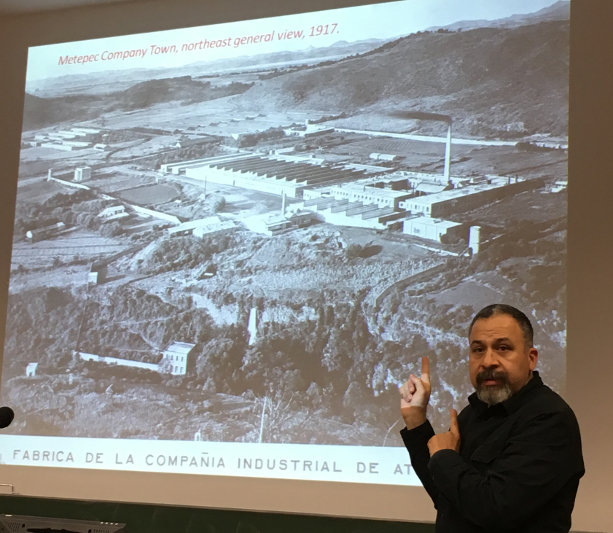From mediocre to masterly in 48 hours
‘Everything is under control’, he assures me. It is Sunday evening. In exactly 48 hours he will be presenting his talk at the University of Antwerp. ‘Could you tell me the topic of your talk?’ I ask him.
Mariano Castellanos is a historian and the director of a Mexican research department for heritage management. He is the head of a project about the former textile factory of Metepec, located in the Mexican Puebla province. The factory was once among the largest of the country, until it closed late 1960s.
‘I will talk about the conservation of Mexico’s industrial heritage’, he shares with me while we sip from our coffees. He shows me the Prezi slides he has prepared. I see international heritage treaties flash by, lists of historical heroes, abbreviations of organizations. An overload of text, tables and background colors.
‘Very interesting.’ I say. ‘Give me a day or two and I could create a similar presentation on industrial heritage in Mexico. All the data that you mention I can easily track down on Wikipedia or elsewhere. Now, what makes you stand out is your project in Metepec. Why not capture your audience by sharing those stories?’
Together with Metepec’s local community, Mariano’s research team had established a museum that tells the tale of the factory’s industrial past. ‘Do you have any pictures from that time?’ I ask him. ‘I sure do.’ he answers. ‘Why not add a couple of pictures of the old factory to your presentation, show us the impact it had on the area and share with us the importance of conserving this former factory.’ Mariano pauses, then nods: ‘I think I understand. Let me make some adjustments to my presentation.’ He spends Monday and Tuesday alone in his hotel room.
When I see Mariano again Tuesday evening at the university, he is about to present his talk. Could he have reworked his presentation? His talk starts off bumpy – no one is immune for stress -, but as the engines warm up, Mariano takes us along on a journey to the factory that would forever reshape the landscape of Metepec. We get to see videos and photographs, and listen to story of the 82 year old guide who had worked at the factory as a child.
During the question round hands shoot up across the room. After the conference the organizer rushes over to shake Mariano’s hand. ‘Your presentation must have received the most questions from the audience ever. They loved it.’
Mariano sighs with relief. His mission is complete. He was able to exchange contact details and discussed possible further collaborations with fellow researchers.
Now imagine this:
It is Sunday evening. Mariano and I are enjoying a cup of coffee while going through his presentation. I suggest for him to talk about the factory in Metepec, but Mariano says he has already spent enough time preparing for his presentation and would rather go shopping in Antwerp on Monday. On Tuesday evening he presents his talk. After an hour of Mariano reading off treaties, dates and abbreviations, he receives a modest round of applause. No questions. The organizer quickly fires off a question, to break the silence. No one approaches Mariano for further collaborations.
The difference between mediocre and masterly
The more concrete, the better
Industrial heritage is a vague concept. One person may picture an old mine, the other a steam train. Make your topic tangible by introducing a concrete example, allowing your audience to better envision what you are talking about. After this you can broaden the topic to move on to a more abstract level.
Make things personal and add emotion
Avoid talks that anyone could present. Talk about how you got started with this project, what could have gone wrong, what were the obstacles you overcame. Add emotion to your presentation, by sharing stories, just like the one about the 82-year-old guide who, as a child, had worked in the factory.
Show it
A picture is worth more than a thousand words. Demonstrate what you are talking about. Share photos and videos on your slides. The text will come from your mouth, don’t repeat it on your slides.
Use plain language
A presentation is a dialogue with your audience. Speakers often prepare using written text, but written text is more difficult to follow than spoken text. How would you share your research with your next door neighbor? Address your audience in the same way.
In Mariano’s case, these tips helped make the difference. In our workshops we will teach you how to score points with your presentation, so that it becomes masterly!
